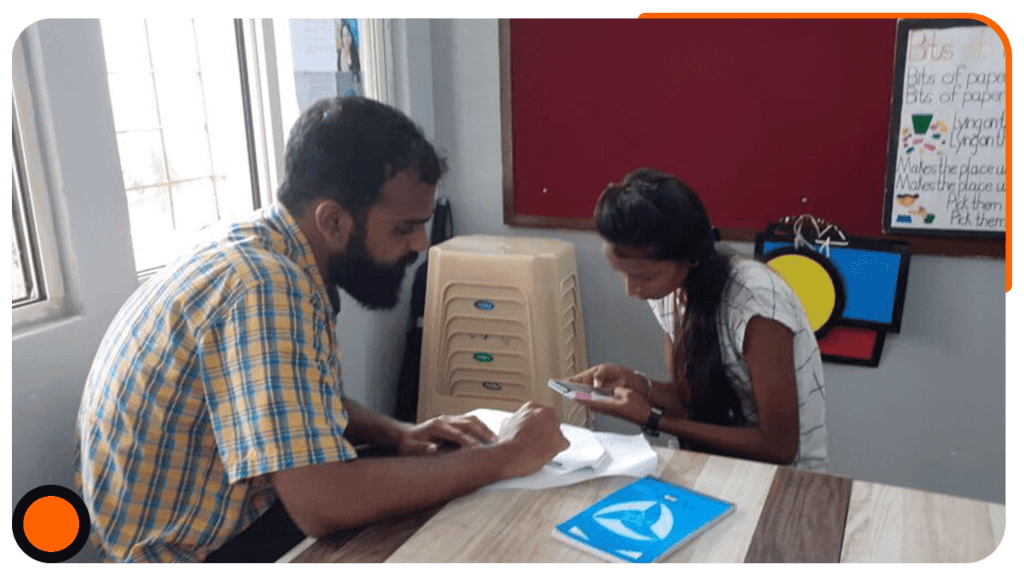World Vision India
Understanding impacts of Community Development interventions
Partner/Client
World Vision India
Sector
NGO
Location
Madhya Pradesh
KEY HIGHLIGHTS
- World Vision India (WVI) is one of the country’s largest child-focused humanitarian organisations. With over six decades of grass root experience, World Vision India is dedicated to improving the lives and future of India’s most vulnerable children.
- The Area Development Program (ADP) in Hoshangabad district of Madhya Pradesh was initiated by World Vision India in 2009. The program had been operational in the Sohagpur block of Hoshangabad district on multiple themes of Education, Health, Community Engagement, and Economic Development since 2007.
- Under health, the program capacitated pregnant women, mothers, community members, and government staff such as Anganwadi Workers (AWW), Auxiliary Nurse Midwifery(ANM), and Accredited Social Health Activist (ASHA) with appropriate knowledge and skills on nutritional supplements, feeding practices, and the importance of good health and hygiene.
- Under education, remedial classes were held for students; study material was provided; teachers were hired and trained; School Management Committees (SMCs) were strengthened; and, infrastructure support in the forms of toilets, sitting facilities, boundary walls was provided.
- Under community engagement, children and adults were mobilised to form groups such as the Children Groups, Citizen Voice and Action groups, and Children Protection Units, and protect and advance children and community member rights.
- Under economic development, youth have been linked to skilling courses and employment subsequently; farmers received access to agricultural and livestock inputs, trainings on agricultural practices, and access to better irrigation facilities via existing government schemes.
- The End of Program evaluation by 4th Wheel Social Impact was to assess the degree to which the ADP Hoshangabad program achieved its intended outcomes between 2007 and 2020.
APPROACH
- The study reached a total of 341 stakeholders across all the programs. These included community members implementing programs such as CVA members, ASHA, ANM and AWWs, etc. as well as program d beneficiaries.
- Owing to Covid-19 realities and restrictions on travel, the entire survey was conducted virtually.
- Analysis was undertaken to answer OECD DAC criteria-based research questions on the 4 themes with impact tracked by comparison with baseline data.
- Considering the different stakeholder groups included in this study, data was classified into themes based on the indicator grid. Sorting and cleaning the data helped to identify patterns and connections between the different categories, and data was then analysed based on the evaluation questions.
INSIGHTS AND FINDINGS
- Female representation (61%) was higher than males (38%) in the study.
- Improvements were seen in the number of Antenatal Care (ANC) visits made by pregnant mothers, from the 2016 baseline (10%) to the 2020 evaluation study (85%), which is corroborated by respondents stating that there is now increased awareness, improved services provided by healthcare workers and more engagement of health workers with communities.
- Birth-spacing was still not widely practiced in communities. While the program has led to an awareness and understanding on the importance of birth spacing and that there should be a gap of minimum 2 years, social beliefs and customs deter the program from having an impact.
- 96.43% students were positive that their learning has improved since joining the remedial classes. Student education aspirations have improved, with 57.14% students wanting to complete graduation.
- There have been very positive trends in children participating in Children’s groups while tracing membership reach from 2016 (11.53%) to the time of this evaluation study (91.25%).
- Most farmers mentioned that there was change in the productivity of the land, and increased incomes, owing to improved knowledge and access to agricultural inputs.
RECOMMENDATIONS / VALUE ADDITION
- To further improve food security and reduce malnutrition among children, existing activities (PD Heart and Umang) with children can be scaled and strengthened.
- Direct messaging that focuses specifically on birth spacing and ‘Saving the Girl Child’ must be ensured.
- Remedial classes can be redesigned to form small study groups for children in target villages, and remedial volunteers could be given ICT4E tools to enable children’s learning.
- To address existing and continuing child rights violations, cases of child right violations should be closely monitored, intervened upon and documented, focusing on gender equality and the girl child.
- Farmer linkages with Government Schemes through awareness and handholding support should be implemented at scale, to improve irrigation facilities (rain water and fog harvesting, borehole drilling and rehabilitation) and access to farming inputs. This will in turn, also have positive impacts on the environment.

